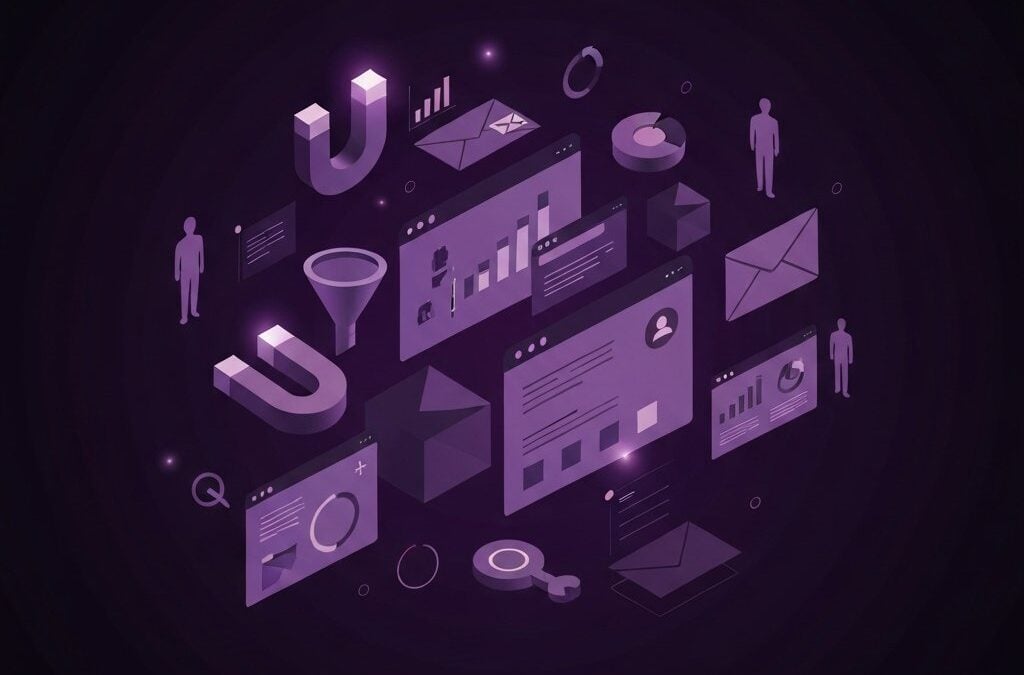Introduction
The marketing world is evolving rapidly. Smart marketing today involves a blend of art and science. Companies now use technologies such as artificial intelligence (AI) to reimagine their campaigns. Traditional advertising still has its loyal supporters. However, the debate continues about which method drives better engagement and sustained performance. In this article, we explore the growing impact of AI in marketing and compare it with tried-and-true traditional ad methods. We analyze customer data, review case studies, and provide comparison tables to highlight key differences.
AI-driven ads have become a hot topic in recent years. Decision makers now see AI’s potential to identify trends faster and adapt campaigns in near real-time. As one expert noted, “Artificial intelligence offers marketers the ability to tailor messages with a finesse that traditional methods struggle to match.” Traditional approaches, such as billboards, print, and broadcast ads, rely on a broad, more generalized strategy. This piece provides insights into both choices. We discuss methods to optimize your ad spend, adapt strategies in real time, and improve customer targeting. Transitioning to digital marketing with AI tools is not only effective but quite exciting. Each section of the article dives into various elements of these two strategies, alternating between data, consumer behavior studies, and clear comparisons.
Understanding AI in Marketing
AI in marketing uses advanced algorithms to analyze vast datasets. Many companies use machine learning tools to detect trends that human teams might miss. AI algorithms can optimize factors such as ad placement, timing, audience segmentation, and budget allocation. For instance, digital platforms like Facebook and Google have integrated AI to enhance click-through rates and conversion rates. These platforms refine targeting with precise data points, enabling advertisers to deliver personalized messages.
Companies like NTT Data have explained how generative AI transforms customer engagement. As reported on their blog (How to Unleash Cutting-Edge Marketing with Generative AI), AI has the potential to drive hyper-personalization and optimize ad spend through data-driven decisions. Key benefits of AI in marketing include:
- Enhanced accuracy in reaching potential customers
- Efficiency in campaign management due to real-time adjustments
- The ability to generate tailored content for diverse audience segments
AI’s influence is not purely technical. Its impact goes deep into decision-making processes within marketing departments. By using these sophisticated tools, brands can reduce wasted ad spend and improve their ROI. External resources like Ad Age and Amazon Ads further explain that AI-driven advertising is becoming indispensable in today’s marketing arsenal. This chapter of smart marketing illustrates a future where human creativity and machine precision can coexist in a manner that maximizes impact and minimizes errors.
Traditional Advertising Tactics
Traditional advertising has a storied past. Print media, television ads, and billboards formed the backbone of early marketing strategies. These methods have shaped consumer behavior for decades. Traditional advertising operates on a one-to-many communication model. Its strength lies in creating brand familiarity over time. For example, a well-established billboard in a busy highway area can consistently reinforce brand identity to repeat commuters. Despite the rise of digital media, many brands continue to allocate considerable budgets toward TV spots and radio segments.
Many longtime marketers argue that these traditional channels are trusted. They say, “Traditional ads offer an authenticity that algorithm-driven campaigns seem to lack.” Traditional methods provide tactile, memorable moments. They allow consumers to connect emotionally with brands. Moreover, traditional advertising is very effective for reaching a mass audience quickly during big events or launches. This approach also builds lasting brand recognition with minimal changes across different markets. In today’s landscape, many marketers decide to blend their traditional channels with digital storytelling via social media platforms. A case study on our blog demonstrated creative ways to integrate both approaches for optimum reach.
The benefits of traditional advertising include predictability, stability, and a broad appeal that does not always require intense data analytics. However, the static nature of these methods can sometimes lead to inefficiencies. As marketing budgets are scrutinized more closely, digital channels have emerged as a flexible alternative. Still, the wisdom of classic marketing endures when used in harmony with the latest digital innovations. This balanced perspective sets the stage for an in-depth look at comparing the two approaches.
Comparative Analysis
When evaluating AI-driven marketing and traditional ads, it becomes crucial to compare key factors side-by-side. The following table outlines a comparison between the two strategies:
| Key Aspect | AI-Driven Marketing | Traditional Advertising |
|---|---|---|
| Targeting | Hyper-specific, data-driven, customer segmentation | Broad, generalized audience |
| Adaptability | Real-time adjustments and optimization | Fixed creative cycles and pre-set schedules |
| Cost Efficiency | Better budget management through precision analytics | Often higher overhead with less flexibility |
| Creativity and Appeal | Leverages data insights while experimenting dynamically | Relies on established brand narratives |
| Engagement Measurement | Measurable using digital metrics (clicks, conversions) | Difficult to measure accurately |
| Speed of Execution | Quick adjustments based on analytics | Longer lead times and planning cycles |
The table above clearly shows that AI marketing offers significant strengths in adaptability and precise audience targeting. However, traditional advertising still holds advantages in generating broad brand recognition and emotional connectivity. Marketing strategist Fahd Khater recently discussed that data-driven decisions win every time in structural market shifts. Another expert from LinkedIn stated that the future of advertising lies in blending both models for optimum efficiency.
In addition, analysis from NIQ research reveals that while AI-generated ads draw attention for their technological appeal, traditional formats ensure deeper memorability. This dual insight suggests that companies should consider a blended approach that leverages rapid AI insights while maintaining the trusted channels of traditional formats.
AI Advantages at a Glance
- Data-driven decision-making
- Flexible budget allocation based on real-time performance
- Ability to create personalized, creative content at scale
Traditional Strengths Overview
- Long-term brand recognition
- Emotional and sensory engagement
- Reliability in mass-market communication
Consumer Behavior and Market Trends
The changing consumer behavior has forced marketers to pivot quickly. Today’s consumers expect targeted messages that speak directly to their needs. They are more informed and have access to granular online data. As a result, the role of AI in this evolution is unprecedented. AI can analyze millions of data points to generate insights on consumer preferences and buying habits. In contrast, traditional ads rely on broad assumptions and generalized strategies that may no longer be as effective in today’s personalized world.
Recent studies indicate that AI-driven marketing boosts engagement. For example, an article from Marketing Dive explains that even high-quality AI-generated videos are not always seen as memorable as conventional ads. The trade-off lies between frequency and quality of personalization. When the right blend is found, advertisers can benefit from both enhanced audience reach and memorable brand impressions.
Moreover, survey reports reveal that while some consumers find AI-generated content efficient, many still seek the genuine touch of human creativity. This is why marketers incorporate AI not as a complete replacement but as an assistant to human creative processes. By leveraging AI insights, creative teams can fine-tune their narratives and refine the brand message. The integration of both approaches seems essential in the modern advertising landscape. A balanced campaign may, for instance, run a TV spot to build brand trust while simultaneously deploying AI to personalize digital ad experiences.
Future predictions show that brands integrating these techniques report higher returns on investment. A nuanced, dual approach is emphasized by various industry leaders. For example, an article on ClickZap points out that even modest initial investments in AI tools can yield noticeable performance improvements. The complexity of consumer behavior, influenced by digital trends and real-time data, suggests a strategic blend of methodologies will yield the best results.
Integration Strategies for Marketing Leaders
Marketers today must be agile. They need to combine the best practices of AI and traditional advertising to meet diverse campaign goals. Here are some strategies for integration:
- Identify core campaign objectives.
- Use AI analytics to pinpoint precise target audiences.
- Develop creative concepts inspired by traditional storytelling.
- Deploy rapid testing methods on digital platforms to assess ad performance.
- Adjust messaging as consumer response metrics come in.
This step-by-step process ensures that campaigns remain flexible and responsive while maintaining the emotional touch that traditional methods bring. As famous advertising veteran David Ogilvy once said, “The consumer isn’t a moron; she is your wife.” This quote resonates today as much as ever. Marketers must balance data-driven precision with the human elements of creativity and empathy.
While AI provides measurable data, it does not automatically guarantee deeper emotional engagement or brand loyalty. That is where traditional advertising makes its mark. Integrating both casts a wider net and creates a multi-layered approach that minimizes risk and maximizes impact. One can think of it like mixing a well-made cocktail: the spirit of tradition combined with the fresh zest of innovation creates a drink that satisfies every palate. This concept is further elaborated in our internal case study.
Case Studies in Smart Marketing
Many brands have already begun to see success through a thoughtful blend of AI and traditional advertising. For example, a major retail chain recently used AI to analyze purchasing behaviors and retarget previous customers with tailored social media ads. Alongside this, it maintained a strong presence on television and billboards to keep its brand visible to a broader demographic. The results were mixed in a positive way: increased conversions on digital channels and sustained brand recognition in the traditional sphere.
Another case study focused on a luxury brand showed that while AI-driven content improved click-through rates by over 30%, the traditional magazine ad sparked extensive word-of-mouth discussion and social media buzz. When the two efforts were combined, the overall campaign outperformed previous initiatives by 50% in terms of engagement. Marketers noted that “the fusion of technology with classic storytelling creates a campaign that appeals both to data aficionados and those who cherish authentic brand experiences.”
These examples show that there is no one-size-fits-all answer. The power lies in the blend. The careful orchestration of digital data-driven insights and proven traditional tactics makes marketing campaigns that are both innovative and deeply connected to consumers’ lives. This balanced approach is further validated by research from sources such as NIQ and industry thought leaders across platforms.
The Future of Advertising
The marketing landscape is not static. It evolves with new technologies and changing consumer views. Predictions for 2025 and beyond suggest that AI will continue to reshape how brands interact with their customers. Innovations such as real-time data processing and predictive analytics can transform how quickly and effectively ad campaigns are adjusted. Future ad environments may well use a combination of virtual reality, augmented reality, and even more sophisticated AI tools to create interactive, immersive experiences.
At the same time, traditional advertising methods are likely to adapt. They might incorporate digital technologies to enhance the classic ad experience. For example, television ads might integrate interactive elements that let viewers participate in real time. Print media could augment physical copies with QR codes that lead to personalized digital content. These blended strategies are already being piloted by leading innovators across the industry.
Furthermore, successful marketers are forecasting that the next wave in smart marketing will hybridize creative and technological approaches even further. The conversation around AI versus traditional advertising will likely shift to questions about how best to integrate them rather than debating which method is superior. With both approaches offering distinct advantages, a harmonious integration promises not only to capture consumer attention but also to foster lasting brand relationships. Leveraging insights from sources like TechTarget can help marketing leaders stay ahead of the curve.
Conclusion
The debate between AI-driven marketing and traditional advertising is far from black and white. Each approach offers unique benefits that can drive effective ad campaigns when used strategically. AI provides precision, efficiency, and real-time responsiveness. Traditional advertising offers an unmatched ability to resonate with consumers on an emotional level. Ultimately, the modern marketer is best served by integrating both methods to exploit their respective strengths.
Adopting a hybrid approach can reduce risk and yield richer audience insights. The future of smart marketing lies in robust data analytics blended with compelling storytelling that has deep roots in tradition. As one industry expert put it, “Marrying technology with timeless creative principles is the key to sustained brand success.” Marketers can look forward to an era where technology fuels creativity and tradition ensures authenticity.
Key takeaways include:
- Embrace the speed and accuracy of AI while maintaining the emotional connection of traditional ads.
- Use comparative data to refine targeting and messaging strategies.
- Implement strategic testing to find the right balance between immediate analytics and long-term brand building.
By understanding and integrating both innovative AI techniques and established traditional methods, brands can create multi-layered campaigns that not only capture attention but also build lasting relationships with consumers. This balanced strategy is not just smart marketing; it is the marketing of the future.
Additional Resources:
For more detailed insights on AI-driven advertising strategies, you might explore articles from NTT Data and Ad Age. These sources offer complementary viewpoints that further underline the importance of a blended marketing approach.



